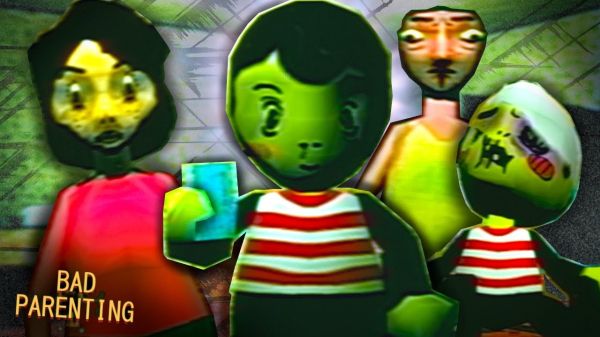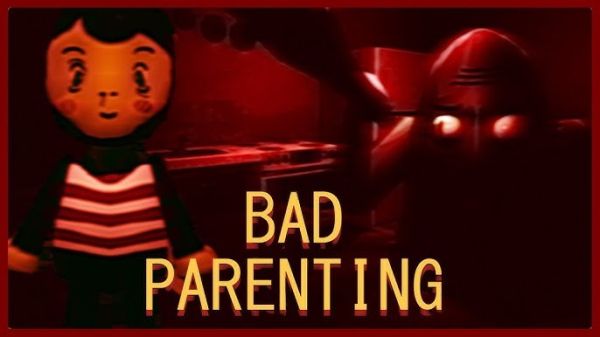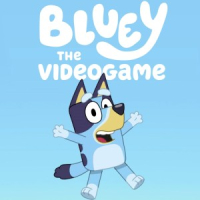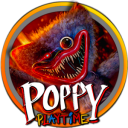Bad Parenting review
Bad Parenting
I first stumbled upon Bad Parenting 1: Mr. Red Face on a quiet afternoon, curiosity piqued by its irreverent title and unique premise. As a gamer with a soft spot for unconventional narratives and offbeat humor, I dove right into the experience. The moment I launched the game, I was drawn into an environment that appeared simultaneously chaotic and strangely charming, a place where daily mishaps and exaggerated parental challenges were presented in both a humorous and unsettlingly touching manner.
Setting the Stage with Unique Gameplay
What immediately impressed me was the distinct gameplay mechanic that walks the tightrope between simulation and absurdity. The gameplay is structured around everyday scenarios that are twisted beyond recognition, each presenting a challenge that forces me to rethink my parenting instincts. I was repeatedly delighted by tasks that contravene conventional wisdom, encouraging creativity in solving outlandish problems. Each level demanded a delicate approach where my choices influenced the quirky progression of the narrative, providing both light-hearted challenges and thought-provoking dilemmas.
Interactivity and Functionality in Focus
Interaction in Mr. Red Face is a fascinating blend of point-and-click adventure elements with real-time strategy moments. I found the controls to be intuitive yet deep enough to encourage experimentation. The interface, though cluttered with an assortment of options, manages to maintain clarity, allowing me to focus on solving the puzzles rather than wrestling with menus. Throughout my playthrough, I appreciated the seamless transitions between storytelling and gameplay, where every new decision felt impactful. This further enhanced my immersion, as I felt that every choice resonated with the overarching narrative and the playful absurdity of the game.
Visual and Aesthetic Adventure
The art style of Bad Parenting 1: Mr. Red Face struck a chord with my inner critic. The visuals combine a cartoon-like charm with a subtle undertone of realism. As I explored each level, I noticed the detailed hand-drawn characters and vibrant backgrounds that contrasted sharply with the dark humor underlying the stories. The character design impressed me, showcasing exaggerated features and highly expressive faces. The titular character, Mr. Red Face, is rendered with such vivid detail that his expressions convey a deep emotional spectrum, making it clear that his struggles are both humorous and heart-wrenching. The color palette used throughout the game is both energetic and atmospheric, creating a dynamic balance that keeps the gameplay visually engaging.
Immersion through Sound and Music
The sound design in this game is as unconventional as the gameplay itself. From the moment I encountered the opening theme, I was enveloped by music that perfectly balanced whimsy with a hint of melancholy. Each scenario comes with its own distinct auditory motif, which provided delightful cues for both humor and urgency. As footsteps, background chatter, and ambient effects complemented the gameplay, I could not help but feel a deeper connection with the game's world. The layered sound design allowed me to be fully present in Mr. Red Face's universe, where every audio element—from the subtle rustle of leaves in a park to the frenzied clamor during a hectic scene—served to heighten my emotional investment in the unfolding story.
Character-Driven Storytelling and Narrative Depth
What sets Bad Parenting 1 apart is its character-driven narrative. Playing through the game, I found myself empathizing with the struggles and victories of its quirky characters. The narrative is interwoven with moments of hilarity, introspection, and unexpected tenderness. As I made decisions that affected the storyline, I discovered that the character arcs were designed to challenge preconceived ideas about familial responsibilities. Mr. Red Face emerged as a multi-layered figure whose emotions ranged from exasperation to introspection, with each scene revealing new facets of his troubled yet resilient persona. The storytelling encouraged me to reflect on the complicated dynamics of everyday interactions, thrusting me into a narrative that is both unpredictable and deeply human.
Humor and Wit Infused in Design
The humor that permeates every aspect of this game is one of its most endearing qualities. I experienced a constant undercurrent of wit and satire that kept me laughing even when the challenges seemed overwhelming. The game cleverly uses irony to portray situations that many would find absurd if not for the empathetic lens through which they are filtered. I encountered moments where the humor was dark yet intensely relatable, mirroring real-life predicaments encountered by many in positions of responsibility. This balance of humor and sincerity contributed to a narrative that is both entertaining and, at times, deeply introspective, urging me to question the broader societal expectations of parenting.
Level Design: A Journey Through Chaos and Order
Each level in Mr. Red Face is a lesson in dynamic design. I appreciated how the designers contrasted orderly scenarios with chaotic complications, challenging me to think on my feet. The progression of levels is meticulously crafted, where each stage feels like a chapter in a larger story. From managing the unpredictable behavior of characters to navigating intricate environments filled with interactive elements, I was constantly surprised by the creative puzzles presented before me. I found the clever placement of hints and the occasional unpredictable twists in gameplay kept every attempt fresh and engaging, ensuring that I remained committed to unraveling the complexities of each new challenge.
Engagement Through Replayability
One of the most notable aspects of my experience was the game's high replay value. I soon discovered that every playthrough could lead to different outcomes depending on the choices I made. The nonlinear structure gave me plenty of reasons to return, with each run offering a fresh perspective on the characters and challenges. I was captivated by the idea that there was no singular path to mastering the game; every decision carved out a new narrative segment that felt uniquely personal and varied. This aspect not only provided hours of entertainment but also motivated me to experiment with different strategies, sparking my curiosity about the unexplored facets of the story.
Balancing Simulated Realism and Exaggerated Absurdity
What I found fascinating about Bad Parenting 1 is how it perfectly balanced the realism of daily struggles with an exaggerated portrayal of unexpected events. While the gameplay occasionally felt like a simulation of real-life issues, it also embraced a sense of absurdity that allowed for both catharsis and humor. I was drawn into situations where the emotional weight of a scenario was lightened by surreal, over-the-top elements that are rare in most games. This balance forced me to constantly shift between a mindset of tactful nurturing and one of whimsical indulgence, resulting in a gaming experience that straddled the line between relatability and fantasy.
Graphical User Interface and Accessibility
The graphical user interface (GUI) of Mr. Red Face is designed with both accessibility and thematic consistency in mind. I found that every element, from the menu layouts to the in-game prompts, was crafted to support the game’s overall narrative without overwhelming the user. The interfaces are clean and offer clear indicators for available actions, making it easy for me to navigate the various interactive elements. Furthermore, the attention to detail in the GUI not only makes the game accessible to new players but also enhances the immersion for those who value streamlined design. The integration of subtle animations and thematic symbols within the interface further enriched my experience, ensuring that every interaction felt both meaningful and visually cohesive.
Social and Psychological Undertones
Throughout my journey with Mr. Red Face, I found the game’s underlying social commentary to be remarkably poignant. The challenges presented, despite being couched in humor, often echoed broader themes of responsibility, societal pressure, and emotional turbulence. Playing through the narrative, I began to see parallels between the exaggerated in-game scenarios and the everyday struggles faced by many. This reflective quality imbued the game with a sense of depth, as it invited me to consider the psychology behind human behavior and the often unspoken challenges of managing expectations. The game deftly hints at the complexities of identity and personal growth, encouraging introspection even as I navigated its playful crises.
Interactive Puzzles and Problem-Solving Elements
Throughout the game, I encountered a variety of interactive puzzles that tested both my strategic thinking and my capacity for empathy. These challenges were interlaced with moments that required a balance of practical decision-making and creative problem-solving. I appreciated the clever design behind these puzzles; they were neither overly simplistic nor unreasonably complicated, allowing the game to cater to both casual players and those seeking a deeper challenge. The puzzles were integrated into the narrative in such a way that every solution felt justified within the larger context of the story. As I worked through each challenge, I was constantly reminded that sometimes, unconventional approaches yield the most satisfying outcomes.
Exploration of Themes and Narrative Layers
Bad Parenting 1: Mr. Red Face is not just a game about a series of humorous mishaps but a narrative rich with layers of meaning. I was enthralled by how the game interweaved themes of personal failure, redemption, and the blurred lines between chaos and order. As I navigated through the storyline, I had moments of clarity where the game shed light on the vulnerabilities and strengths of its characters. The narrative invites players to consider the multifaceted nature of human relationships and the unpredictable impact of personal choices. Each decision I made felt like a step into an ever-evolving story, where past actions resonated in unexpected ways and where every interaction carried the potential for both constructive and humorous outcomes.
Technical Performance and Optimization
From a technical standpoint, I found the game to be well-optimized and responsive. The performance, even during intense sequences, was smooth, with minimal lag or performance hiccups that might otherwise disrupt the immersion. I particularly admired how the game's design took into account various system configurations, ensuring that both high-end and modest hardware users could enjoy the experience. The stability of the game was a testament to the attention given to both design and technical execution, giving me a complete sense of reliability while I delved deeper into its myriad challenges. The technical robustness allowed me to focus entirely on the unfolding drama, trusting that the game would run seamlessly regardless of the complexity of the tasks at hand.
Personal Take on Game Development and Innovation
As someone who has followed the evolution of indie games with a keen eye for innovation, I was genuinely excited by the creative risks taken in Mr. Red Face. The game represents a bold step away from the typical formulas of mainstream titles, opting instead for a narrative that is as unpredictable as it is engaging. I appreciated the willingness of the developers to tackle mature themes with humor and originality, creating a world where the lines between conventional simulation and creative absurdity blur in the most intriguing ways. Observing the mechanics and thematic execution, I felt a sense of kinship with the development team—a shared enthusiasm for pushing boundaries and exploring the uncharted territories of interactive storytelling.
Emotional Resonance and Player Engagement
Throughout my immersive experience, I found that the game prided itself on provoking an interesting mix of emotions. In numerous moments, the seemingly lighthearted and humorous elements gave way to scenes that provoked a contemplative mood. I experienced a range of emotions as I navigated the challenges, from amused disbelief at the quirky scenarios to a sincere empathy for the struggles of the characters. The moment-to-moment emotional engagement was a testament to both the writing and the interactive design. This balance of lighthearted fun with shades of genuine pathos elevated my understanding of the game, enabling me to appreciate its narrative depth without ever sacrificing the entertainment value that initially drew me in.
Impact on My Perception of Unconventional Storytelling
As I wrapped my time with Bad Parenting 1: Mr. Red Face, I realized that the experience had reshaped my views about what storytelling in games can be. The unconventional narrative, combined with striking visual elements and a cleverly designed interface, challenged traditional notions of success and failure in parental roles. I found that the game’s unique form of satirical, yet empathetic, storytelling prompted me to reconsider my personal beliefs about responsibility and the unpredictable nature of life. Each interactive moment provided an opportunity to explore the dichotomy between the humorous and the heavy, leaving me intrigued by the potential of games as a medium for layered, reflective narratives.
Pros
- Unique narrative approach incorporating humor and heartfelt moments
- Intuitive controls with engaging point-and-click mechanics
- Innovative gameplay blending simulation with creative absurdity
- Visually striking art style with detailed character design
- Dynamic level design that offers high replay value and diverging narratives
- Immersive sound design that perfectly complements each scene
Cons
- Some puzzles may feel unusually complex for casual players
- The interface can appear cluttered to those who prefer minimalistic designs
- Occasional difficulty spikes may disrupt the overall pacing





























